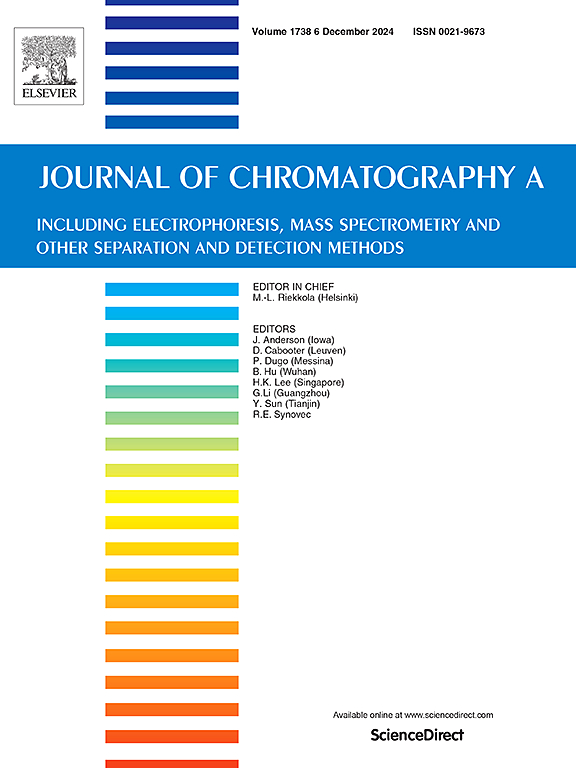γ-羟丁酸(GHB)的注射器酰化:条件优化、源调整和衍生物的表征。
IF 3.8
2区 化学
Q1 BIOCHEMICAL RESEARCH METHODS
引用次数: 0
摘要
几年来,气相色谱-质谱法(GC-MS)一直被用于鉴别法医毒理学案件中的γ-羟丁酸(GHB)。然而,在注入口条件下,伽马-羟丁酸会脱水生成伽马-丁内酯(GBL)。因此,在分析前对 GHB 进行衍生化反应以避免产生 GBL 是非常重要的;目前已开发出多种分析 GHB 的方法,但很少有方法使用酰化作为衍生化的一种形式。本研究探讨了如何优化 GHB 的注射器端口酰化反应,以提高其可检测性和热稳定性。通过使用三氟乙酸酐(TFAA)和七氟丁酸酐(HFBA)来增强衍生产物的色谱和质谱。结果,这两种试剂都提高了伽马--羟丁酸的可检测性,其中 TFAA 在色谱图中产生了更主要的峰,而 HFBA 则提供了更复杂的质谱。两种试剂的最佳进样器温度均为 240 °C,这大大提高了衍生化产率。这些结果证明了注射器端口酰化作为 GHB 相关药物衍生化替代途径的有效性。本文章由计算机程序翻译,如有差异,请以英文原文为准。
Injector port acylation of γ-hydroxybutyrate (GHB): Condition optimisation, source adjustments, and characterisation of the derivatives
For several years, gas chromatography-mass spectrometry (GC–MS) has been used to identify gamma-hydroxybutyrate (GHB) in forensic toxicology cases. However, under injector port conditions GHB can dehydrate into gamma-butyrolactone (GBL). Therefore, it is important for GHB to undergo a derivatisation reaction before an analysis to avoid the production of GBL; various analytical methods have been developed for the analysis of GHB but very few methods use acylation as a form of derivatisation. This study explores the optimisation of injector port acylation of GHB to improve its detectability and thermostability. By utilising trifluoroacetic acid anhydride (TFAA) and heptafluorobutyric acid anhydride (HFBA) to enhance the chromatography and mass spectra of the resulting derivatives. As a result, both reagents improved the detectability of GHB, with TFAA producing more predominant peaks within the chromatogram and HFBA offering a more complex mass spectrum. The optimal injector temperature was found to be 240 °C for both reagents, which significantly increased the derivatisation yields. These results demonstrate the effectiveness of injector port acylation as an alternative derivatisation route for GHB related drug cases.
求助全文
通过发布文献求助,成功后即可免费获取论文全文。
去求助
来源期刊

Journal of Chromatography A
化学-分析化学
CiteScore
7.90
自引率
14.60%
发文量
742
审稿时长
45 days
期刊介绍:
The Journal of Chromatography A provides a forum for the publication of original research and critical reviews on all aspects of fundamental and applied separation science. The scope of the journal includes chromatography and related techniques, electromigration techniques (e.g. electrophoresis, electrochromatography), hyphenated and other multi-dimensional techniques, sample preparation, and detection methods such as mass spectrometry. Contributions consist mainly of research papers dealing with the theory of separation methods, instrumental developments and analytical and preparative applications of general interest.
 求助内容:
求助内容: 应助结果提醒方式:
应助结果提醒方式:


